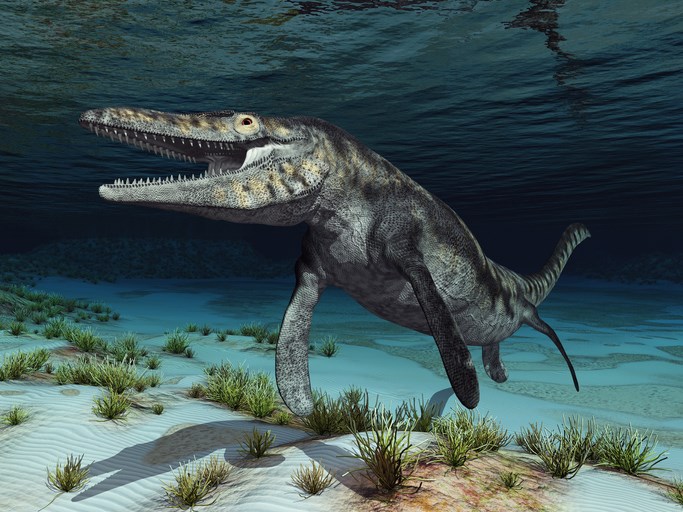The Royal Saskatchewan Museum is excavating the fossilized skeleton of a Prognathodon in Grasslands National Park and hopes to exhibit it in three or four years.
Fossils like this Prognathodon lie buried for incredible passages of time before being exposed by erosion, excavation, construction, or mining. They are surprisingly delicate despite being rocks, and palaeontologists take their time in the retrieval and study process. Every detail of the fossil must be preserved to extract as much data as possible.
"This is a very significant find and we are very excited about the prospects of this specimen," Parks, Culture and Sports Minister Laura Ross said. "This is another example of the excellent work being done by the RSM's research staff - and that there is always something new happening at the RSM."
Prognathodons were marine lizards in the mosasaur family. They were a massive super-predator that ranged all over the globe. This particular animal lived in the Western Interior Seaway, a shallow continental sea that connected the Gulf of Mexico with the Arctic Ocean about 75 million years ago.
Mosasaurs were some of the largest aquatic predators that ever lived, although there were some members of the family who only grew to about a metre. More commonly, they grew to about 4 meters (13 ft.). The largest could have exceeded 17 meters long (56 ft.).
Mosasaurs were not dinosaurs, but air-breathing aquatic reptiles, similar to today’s sea turtles.
Parks Canada was first contacted about the discovery in 2012 by an area resident. The dig permit was secured in 2019, and Parks Canada staff, RSM palaeontologists, and graduate students began the excavation in earnest in September.
To date, RSM staff have collected the majority of the skull, most of the neck, and a few bones from further back in the skeleton. It appears as though this specimen had a skull approximately 130 centimetres in length. This would likely mean that the living reptile was over 10 meters (33 ft.).
"Some of the world's most exciting fossil finds have been unearthed in Western Canada and this giant Prognathodon, found in Grasslands National Park, adds to our knowledge of the ancient sea life that once covered Saskatchewan," said Steven Guilbeault, Minister of Environment and Climate Change and Minister responsible for Parks Canada. "Parks Canada is proud to work with the Royal Saskatchewan Museum to expand our scientific knowledge, fire our imagination, and share these discoveries with the public for years to come."
Bearpaw Shale, a rock formation known for its fossils, was deposited by the Western Interior Seaway across much of southern Saskatchewan. Grasslands National Park West Block is one of the best places to find fossils in this rock layer because of the park's extensive badlands exposures. It is hoped that more of the body can be recovered in the coming summer and could add another marine reptile more than 10 metres in total body length to the provincial collection.




